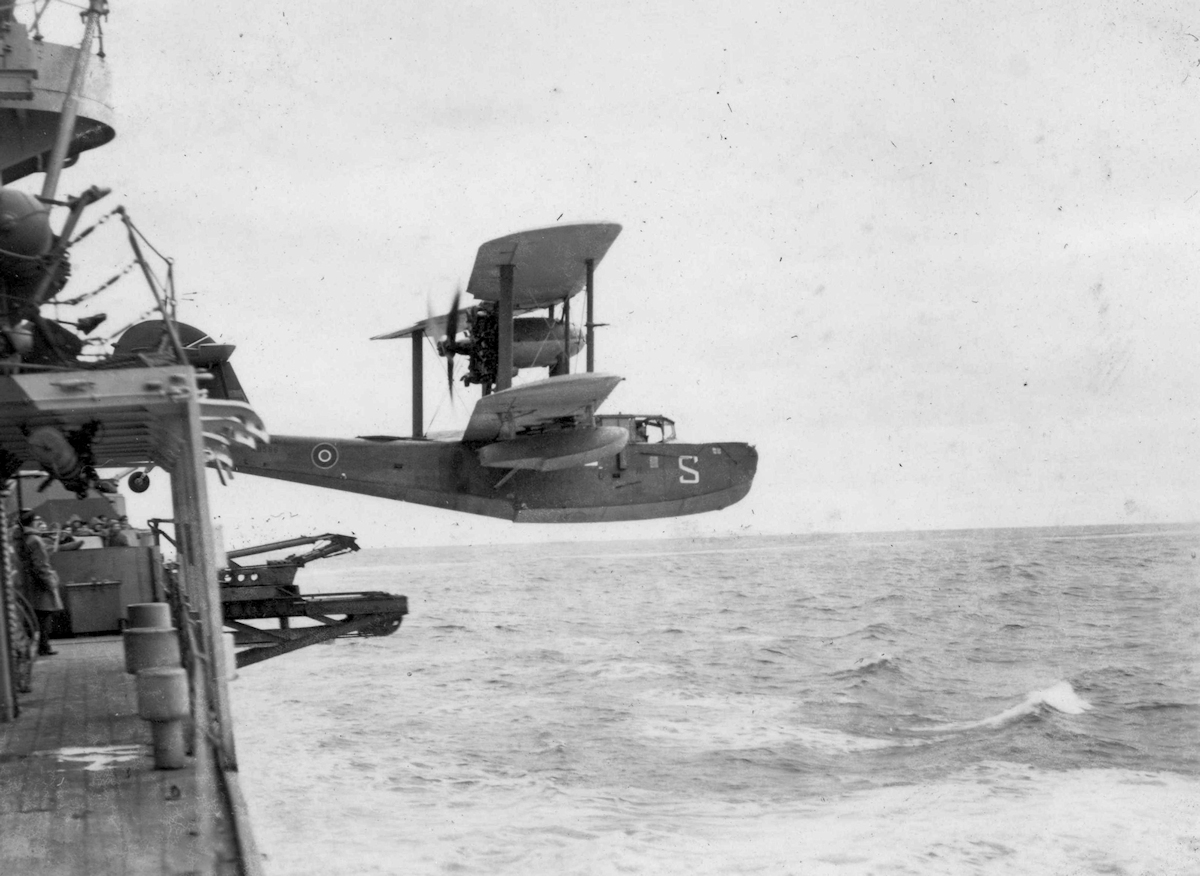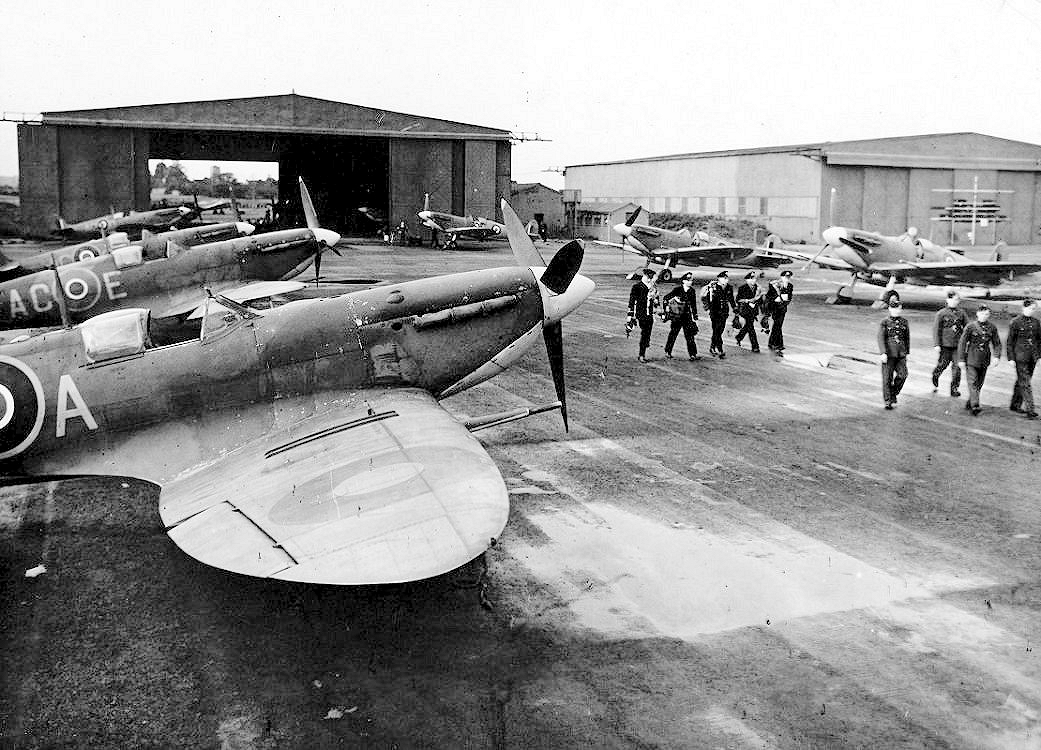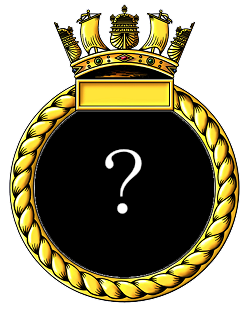



The unit number 715 was first used for a Catapult Flight of the Fleet Air Arm of the RAF. The flight formed on July 15th 1936, under the command of Lt. Cdr E. O. F. Price, RN, by renumbering No.403 (Catapult) Flight, to operate in ships of the 5th Cruiser Squadron in the China Station The flight had its shore based Headquarters at Kai Tak airport, Hong Kong with a satellite at Wei-Hai-Wei in northern China. The Flight initially operated Osprey III seaplanes embarked in the County Class Cruisers HMS BERWICK, HMS DORSETSHIRE and HMS KENT; these began to give way to Walruses from September 1936, the Ospreys being withdrawn by July 1937.
The Flight was
reorganised in 1937, BERWICK and KENT were withdrawn
for major refits, and the Flight took over
responsibility for aircraft in HMS BIRMINGHAM, HMS
CORNWALL, HMS CUMBERLAND and HMS SUFFOLK. By the end
of 1937 the Flight was elevated to squadron status.
On May 24th 1939 the Squadron was transferred to
Admiralty control, it was operating 7 Walruses in 5
cruisers, using both
Kai Tak and Seletar,
Singapore, as shore bases.

The Supermarine Walrus amphibian is launched from a Cruisers short catapult system.
In January 1940 all Catapult Squadrons were merged
into No.700 Squadron which was to assume
responsibility for all ships flights; No.715
Squadron was disbanded at RAF
Kai Tak on 21 January 1940.
No.715 Squadron reformed at RNAS St Merryn on August 17th 1944, when Lt. Cdr (A) R. E. Gardner DSC RNVR, (in command) with Lieutenants I. F. Voller and C. V. Atkinson, RNVR broke away from No.736 Squadron to operate as the Fighter Wing of the School of Air Combat (later renamed School of Naval Air Warfare).
The new squadron was tasked to operate Fighter Air Combat Instructor and Fighter Leaders Courses, training pilots in the principles of air combat using a collection of Spitfire, Seafire, and Corsairs. Two Miles Master trainers were also available, shared with 736; and from January 1945 a small number of Harvard trainers were also received. A further 6 pilots arrived in September, when courses began.

The Supermarine Seafire was the main equipment on which those attending the Fighter Air Combat Instructor and Fighter Leaders Courses .
Pilots undertook a six week course involving both classroom and flying instruction with 9 separate flying exercises which had to be mastered in order to pass the course;
Exercise F1, range estimations and holding a steady sight:
Exercise F2, judging line of flight
Exercise: F3, Steady deflection shot:
Exercise F4, attacks from opposite course:
Exercise F5, affiliation with Barracudas:
Exercise F6, Half roll attacks from above and below:
Exercise F7, Barrel roll attacks:
Air to Air firing:
Gyro gun sight exercises.
With the exception of the air to air firing, all exercises were filmed using 16mm gun cameras so that the pupil’s performance could be assessed. An example of this is Lt. Cdr J. G. Large RNVR [1] who attended course number 6. He flew 52 hours in 16 different Seafires during his course. A total of 41 flights, 32 gun camera simulations and 9 air to air firing. He commenced the course on September 11th 1944 and passed out as an air combat instructor on October 19th. He was appointed to number 2 Naval Air Fighter School (761 Squadron) at RNAS Henstridge in November 1944.
Command of the squadron passed to Lt. Cdr D. G. Carlisle DSC, SANF(V) on December 12th 1944 and to Lt. Cdr F. R. A. Turnbull DSC & Bar RN on June 28th 1945. There were 22 pilots on the squadron strength when the war ended.
Training continued for several months after the end of the war, but on March 31st 1946 No.715 squadron disbanded, and was reabsorbed by No.736 Squadron.
Content revised: 23 October 2022
Additional sources:

None
Osprey III/SP Jul 1936 - Jul 1937
Walrus I Sep 1936 - Jan 1940
Squadron disbanded 21Jan 1940
Master II Aug 1944 - Jun 1945
Corsair III Aug
1944 - Aug 1945
Corsair IV Aug 1944 - Jun 1946
Seafire Va Aug 1944 - Oct 1944
Seafire lb Aug 1944 - 1945
Seafire III Aug 1944 - Dec 1945
Seafire XVII Aug 1944 - Dec 1945 )
Harvard Ilb Jun 1945 - Nov 1945
Harvard III Sep 1945 - Dec 1945
Lt. Cdr E. O. F. Price RN 15 Jul 1936 (Flt Lt RAF)
Lt I. R. Sarel RN 11 Oct 1937 (Sq Ldr RAF)
Lt P. J. Milner-Barry RN 24 May 1939
Squadron disbanded 21Jan 1940
Lt. Cdr (A) R. E. Gardner DSC RNVR 17 Aug 1944
Lt. Cdr D. G. Carlisle DSC SANF(V) 12 Dec 1944
Lt. Cdr F .R. A. Turnbull DSC & Bar RN 28 Jun 1945
Squadron disbanded 31 Mar 1946
None
© 1999-2025 The Royal Navy Research Archive All Rights Reserved Terms of use Powered byW3.CSS
Press F5 to refresh the page after posting your comment or to hide the form
Watch the gun camera footage from his course Click here
Close
Comments (0)